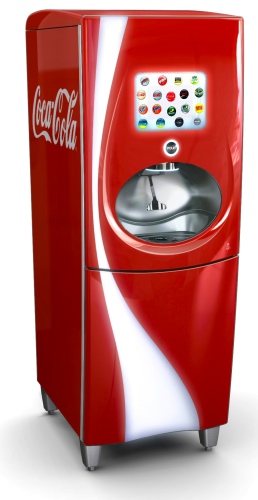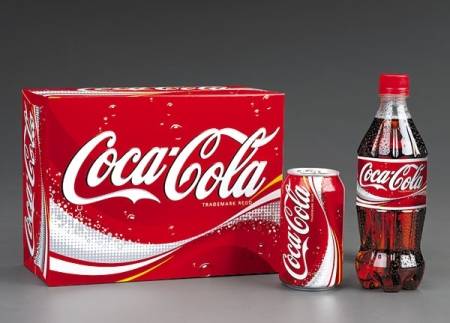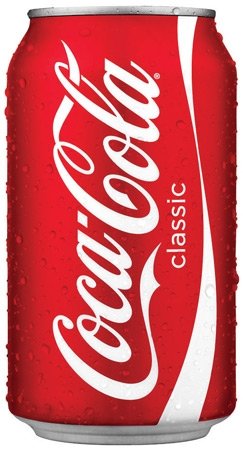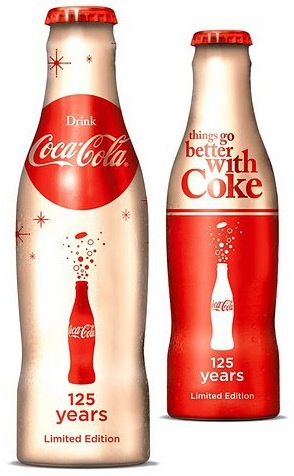Building a $250,000 Coca-Cola Portfolio By 35 Through the Coca-Cola Direct Stock Purchase Plan
 A nearby sandwich shop installed a Coca-Cola Freestyle fountain machine, the revolutionary new design that allows you to create more than 100 flavors of soda from a single spout as a result of microburst flavor technology controlled through a touch-face screen. Aaron and I went and had lunch, trying it out for ourselves. For me, it was Cherry Vanilla Coca-Cola all the way. He tried both the Raspberry Coca-Cola and the Lime Coca-Cola. A few hours later, we returned and I tried the Orange Coca-Cola and he a mix of Strawberry Sprite and Vanilla Sprite.
A nearby sandwich shop installed a Coca-Cola Freestyle fountain machine, the revolutionary new design that allows you to create more than 100 flavors of soda from a single spout as a result of microburst flavor technology controlled through a touch-face screen. Aaron and I went and had lunch, trying it out for ourselves. For me, it was Cherry Vanilla Coca-Cola all the way. He tried both the Raspberry Coca-Cola and the Lime Coca-Cola. A few hours later, we returned and I tried the Orange Coca-Cola and he a mix of Strawberry Sprite and Vanilla Sprite.
Anyway, that’s not the point. As we were sitting in the sandwich shop for lunch, I was looking at the machine and thinking it was an odd thing that here I was, now 29 years old, and my youngest sister, who is 16 years old, owns at least $7,000 to $8,000 worth of Coca-Cola common stock through the direct stock purchase plan. On top of the regular savings that are put aside through the direct stock purchase plan, the Coca-Cola company pays her $200 or so in cash dividends each year, which gets reinvested in more shares of Coke. She also has no debt, whereas many kids her age are borrowing money to buy a car, creating the cycle of selling your labor to pay interest to bankers instead of building your own resources.
Here is the insane part: Without ever contributing another penny, if the company’s shares with dividends reinvested grow at the historical rate for equities over the next 66 years, by the time she is Warren Buffett’s age, the Coca-Cola shares in her direct stock purchase plan account would be worth between $3,700,000 and $4,300,000. You’d have to account for inflation, which would put the purchasing power at somewhere between $283,700 and $325,000 in today’s terms.
Obviously, no one wants to wait until they are in their 80s, if they even make it that long, to enjoy the fruits of their accumulated capital. The lesson is, if you go through life planting financial redwood trees and oak trees, somewhere along the line, you and your children and grandchildren are going to enjoy the harvest. This sort of plan won’t get you a Maserati by the time you are 22 years old, but it serves as a nice backup to help provide some assurance that you are never poor and always have enough money to buy the things you need and most of the things you want. This essay is more of a teaching exercise in the power of compounding, though I’m going to do my best to convert it into action by convincing my sister she needs to do what I’m about to prescribe. Also, please keep in mind that I am using Coca-Cola solely as a teaching tool – an illustration – due to its long-term compounding record and the fact it is held by nearly every investing household in the United States given its prominence in both the Dow Jones Industrial Average and the S&P 500. There are no guarantees an investment in Coke will make money and, in fact, like any business, it is possible the company could someday be wiped out, resulting in substantial losses for owners. Coke, in other words, is not the point. I want you to focus on the underlying concept. That’s what matters.
Building a $250,000 Portfolio of Coca-Cola Shares By 35 Years Old
While enjoying the different varieties of Coke from the Coca-Cola Freestyle machine, I began running scenarios in my head, and then later on a calculator, posing the following question to myself:
What would it take for my youngest sister to have $250,000 in real, inflation-adjusted dollars sitting in her Coca-Cola direct stock purchase plan by the time she was 35 years old? That level of ownership in the company should generate roughly $7,500 per year in cash dividends at a 3% dividend yield.
I’ve run different forecasts like this in the past, and even written about some of them, but I was in an inquisitive mood so I did it again.

I was thinking about the Coca-Cola dividend reinvestment plan, or DRIP, in part, because of the success of people like Don Keough, the legendary Coca-Cola executive who now owns approximately 4,484,000 shares of Coca-Cola directly and 420,088 shares indirectly, putting his total ownership of Coke stock at 4,904,088 shares. Going off the most recent figures, Coke’s earnings per share are $5.19 after taxes, so Keough’s share of the profits is $25,452,216.72. To state it another way, Mr. Keough is indirectly earning nearly $70,000 each and every day from his pro-rata ownership of Coca-Cola. Coke pays out $1.88 per share of those profits in the form of cash dividends. That means Don Keough gets a check for $9,219,685.44 every year before the 15% dividend tax. Coke pays out dividends quarterly (4 times per year). If you were Don Keough, you would receive, for all intents and purposes, a check in the mail from Coca-Cola for $2,304,921.36 every 3 months.
The numbers turned out to be more than reasonable. To reach $250,000 in today’s inflation-adjusted dollars worth of Coca-Cola stock in her portfolio, my sister would only need to save $500 per month from now until when she was 35, reinvesting all of her dividends until that time. (Recall that she already holds a stake of existing Coke stock, which is being factored into this calculation.) Obviously, this involves some non-guaranteed assumptions about the long-term compounding rate of Coca-Cola common stock but, again, this is an academic exercise that I find enjoyable.
At The Point She Were 35 Years Old, She Would Have Several Options for the Coke Stock Held In the Direct Stock Purchase Plan
At 35 years old, my sister would have several options sitting on a portfolio with a Coke position worth a quarter-of-a-million dollars. She could:
- Continue investing $500 per month, reinvesting dividends, and ignoring the shares altogether
If this option were chosen, by the time she were Warren Buffett’s age, my sister might have $36,080,322 in Coke stock. If inflation runs 4% as it has for the past century, that would be the equivalent of $2,710,000 today. Annual cash dividends would be the inflation-adjusted equivalent of $81,300 or so today.
- Stop investing the $500 per month, but continue to reinvest the dividends
By the time she were Warren Buffett’s age, the Coke stock might be worth $27,563,000, which would be around $2,070,750 in today’s inflation-adjusted dollars. She would never have to think about the Coca-Cola direct stock purchase plan again and could ignore it until she reached Buffett’s age. Annual cash dividends might be the same as $62,000 today. After 35 years old, she would have an extra $500 per month, or $6,000 per year, sitting around because she no longer put that money into the direct stock purchase plan account. - Stop investing the $500 per month, and begin having the dividends paid directly to a bank account to be spent each year
By the time she were Warren Buffett’s age, the Coke stock might be worth $7,515,000, which would be around $564,584 in today’s inflation-adjusted dollars but for 47 years, she would have enjoyed cash dividend checks starting at $7,500 in the first year and presumably growing each year thereafter, resulting in hundreds of thousands of dollars in wealth being paid to her over the decades to spend on furniture, cars, clothing, vacations, charity, etc. By the final year, in inflation-adjusted real terms, the dividends should have grown to $17,000 annually. - Sell the entire $250,000, pay the capital gains tax on the profit, and use the money to buy a house, start a business, fund trust funds for the next generation, give to charity, or whatever other cause gets her attention
If she chose this option, there would be no future wealth, but at 35 years old, she’d be able to pay cash for a house nicer than the median home in the United States. Not only would this provide utility in the form of the enjoyment of owning a home, but it would save hundreds of thousands of dollars in interest expense that would be paid to the banks over the course of a traditional mortgage and she’d have the extra $500 per month, or $6,000 per year, in cash that she had been saving regularly.
There Is No Right or Wrong Choice for Dividend Reinvestment Policy
None of these choices are right or wrong, they are merely different relative to opportunity cost.
Personally, I think for the average man or woman, the best option might be #3 once you reach into the six-figures, which would be to begin living off the dividends without ever touching the principal.
Why do I say that given the fact I am a strong proponent of Jeremy Siegel’s research, which shows reinvested dividends are the key to long-term growth in equity investments? Opportunity cost and utility. For the median family, earning around $50,000 in the United States, the idea of getting a $7,500 check each year that could be spent without working would have big influence on quality-of-life. Over the course of a few years, if you knew how to get great deals, you could fill your home with nice furniture, save for a new car, take trips around the world, put together a fantastic wardrobe, or donate to your favorite charitable causes. For example, I recently saw an $11,000 Bernhardt dining room set on sale for $3,990 at Nebraska Furniture Mart. By opportunistically redoing your home, in 3 to 5 years, you could be living like someone who made substantially more money, and have paid for it all with cash dividends. (For me, there would be the added utility of walking through my living room and thinking, “All of this furniture was paid for by the profits from people drinking Coca-Cola. I’m an owner.)
When you’re talking about a typical married couple with 2 or 3 kids living at home, installing a new swimming pool, putting in a home movie theater, taking a trip to Walt Disney World, buying season tickets to your favorite sports team, or even adding the money to savings in the event of an emergency is going to have far more utility than piling up more wealth on paper.
Building Wealth With Direct Stock Purchase Plans Isn’t New
 None of this should be a surprise to regular readers of the site. I once ran a back-dated historical model showing how my grandfather could have amassed a seven-figure estate using only the PepsiCo direct stock purchase plan and dividend reinvestment plan had he taken advantage of the opportunity to become an owner in his favorite soda company. I’ve also explained how one of my own family members setup a direct stock purchase plan and dividend reinvestment plan with one of the major regional banks. That begs the question: Why don’t more people take advantage of the low-cost plans? The answer is easy:
None of this should be a surprise to regular readers of the site. I once ran a back-dated historical model showing how my grandfather could have amassed a seven-figure estate using only the PepsiCo direct stock purchase plan and dividend reinvestment plan had he taken advantage of the opportunity to become an owner in his favorite soda company. I’ve also explained how one of my own family members setup a direct stock purchase plan and dividend reinvestment plan with one of the major regional banks. That begs the question: Why don’t more people take advantage of the low-cost plans? The answer is easy:
- There is no financial incentive for anyone to promote or market them.
- Most investors don’t seem impressed by the idea of investing $68.70 to get a $1.88 dividend check, or 47¢ per quarter, as is the case for shares of Coca-Cola on the stock market as of this morning.
- They don’t factor in the possibility of dividend increases over time as successful companies generate larger and larger profits.
- By reinvesting the dividends and combining it with fresh deposits of cash, you can buy even more shares of stock in a business, earning the right to a bigger percentage of the total dividends paid by the company
- They don’t adequately factor in the value of compounding. That same $68.70 invested at 10% for 100 years is nearly $947,000. This is due to math illiteracy in the population (how many people do you know who can calculate the value of an annuity or lump sum in a few seconds? Not many.)
- Too few investors understand that a share of stock is a piece of ownership in a business. It is not a lottery ticket. They mistake the price the stock is trading for on the open market with the value of the company, and the two are not always the same thing. This thesis is the entire basis for Benjamin Graham’s body of work.
All of this means opportunity for the intelligent investor. It is the reason that over the past 20 years, despite record-shattering trade deficits, trillion-dollar budgetary deficits, bitter partisan politics, a dot-com bubble, an Asian currency crisis, two wars, a real estate bubble, a near cataclysmic collapse of the financial sector, and high unemployment, a shareholder of Procter & Gamble could have turned a $100,000 investment into more than $1,200,000. Likewise, a shareholder of Colgate-Palmolive in that same time could have turned a $100,000 investment into roughly $1,000,000. These are name-brand household companies. In the case of Procter & Gamble, out of every 300 homes in the United States, an estimated 298 have P&G products!
 Investors want new, bigger, exciting firms that skyrocket but that hasn’t been what worked throughout most of modern history. For the average person who didn’t possess a lot of financial knowledge, the best bet, historically, seems to have been a collection of ownership in companies that churned out gushers of cash, had strong balance sheets, were reasonably priced relative to earnings (a good rule of thumb is sometimes that the earnings yield should be at minimum 2x the yield on the United States Treasury bond), and that had a history of returning excess surplus capital to owners through dividends or, in some cases, intelligently-executed share repurchase plans. Add in reasonable levels of diversification – again, even a company like Coca-Cola could go bankrupt under certain conditions, even if it does not seem particularly probable – and let time do the heavy lifting. Generation after generation, that’s been the recipe. I don’t see any reason to think it is likely to change anytime soon.
Investors want new, bigger, exciting firms that skyrocket but that hasn’t been what worked throughout most of modern history. For the average person who didn’t possess a lot of financial knowledge, the best bet, historically, seems to have been a collection of ownership in companies that churned out gushers of cash, had strong balance sheets, were reasonably priced relative to earnings (a good rule of thumb is sometimes that the earnings yield should be at minimum 2x the yield on the United States Treasury bond), and that had a history of returning excess surplus capital to owners through dividends or, in some cases, intelligently-executed share repurchase plans. Add in reasonable levels of diversification – again, even a company like Coca-Cola could go bankrupt under certain conditions, even if it does not seem particularly probable – and let time do the heavy lifting. Generation after generation, that’s been the recipe. I don’t see any reason to think it is likely to change anytime soon.
The assumptions in the projections were that on a pre-inflation and pre-tax basis, Coca-Cola would compound at 10% annually, just as stocks have done as a whole for the past 200 years despite depressions, recessions, booms, bubbles, and busts. There is no assurance this can happen or even that the firm will still be around in the future, just as is the case with all businesses, making these risks an inherent, integral, and inextricable part of the nature of equity investment. The presumption is a long-term dividend level of 3% is reasonable for a firm as large as Coca-Cola. Inflation was projected at 4%, which is the same historical rate as the past century; at that level of inflation, it would take $13.31 in 2077 A.D., which is 66 years in the future, to equal $1.00 in money today. At only $500 per month in savings, taxes could be entirely avoided if the money were invested through a tax-advantaged account, such as a Roth IRA, and not through the Coca-Cola direct stock purchase plan or dividend reinvestment plan. Furthermore, although not a bargain, the current valuation for The Coca-Cola Company seems somewhat reasonable in light of historical earnings, unlike its level 10 years ago, when I first setup the direct stock purchase plan for my then 6-year-old sister to teach her about stocks and Coke traded at 50x earnings. This is in no way a stock recommendation and I have no plans to buy any shares within the next 72 hours.


